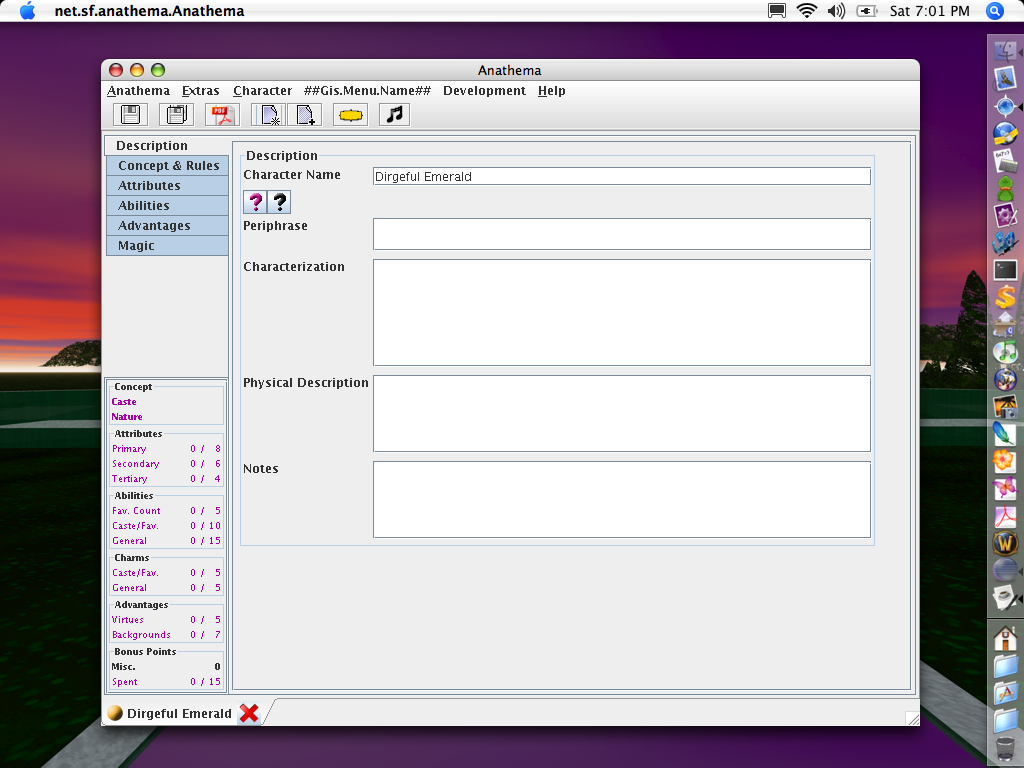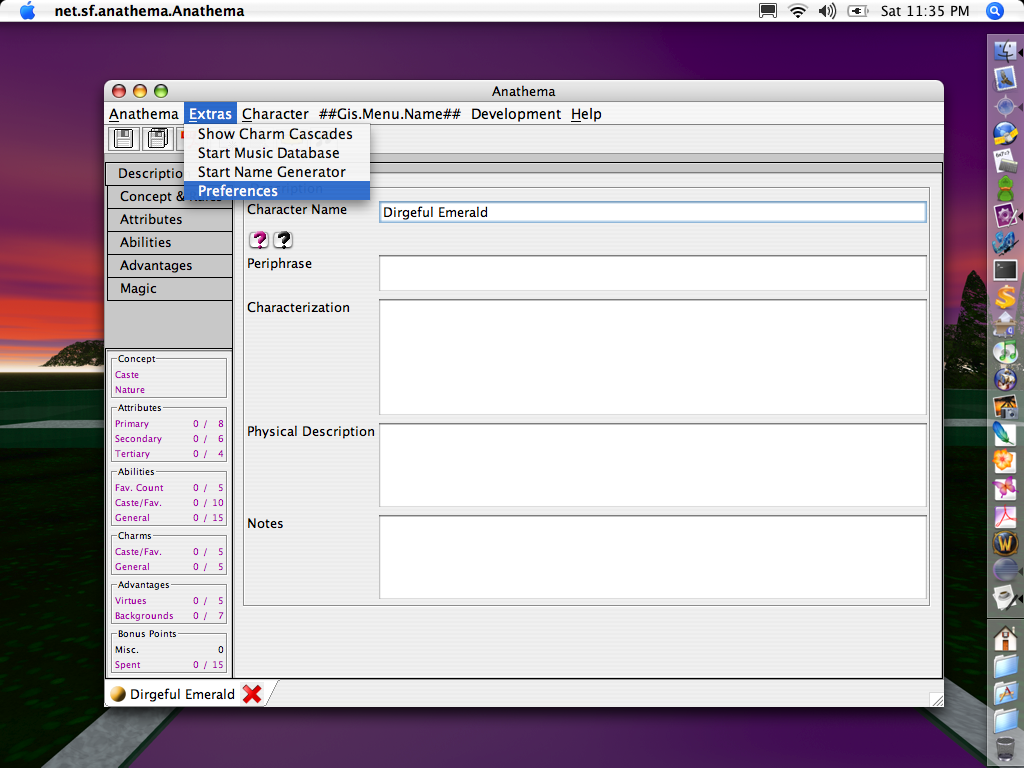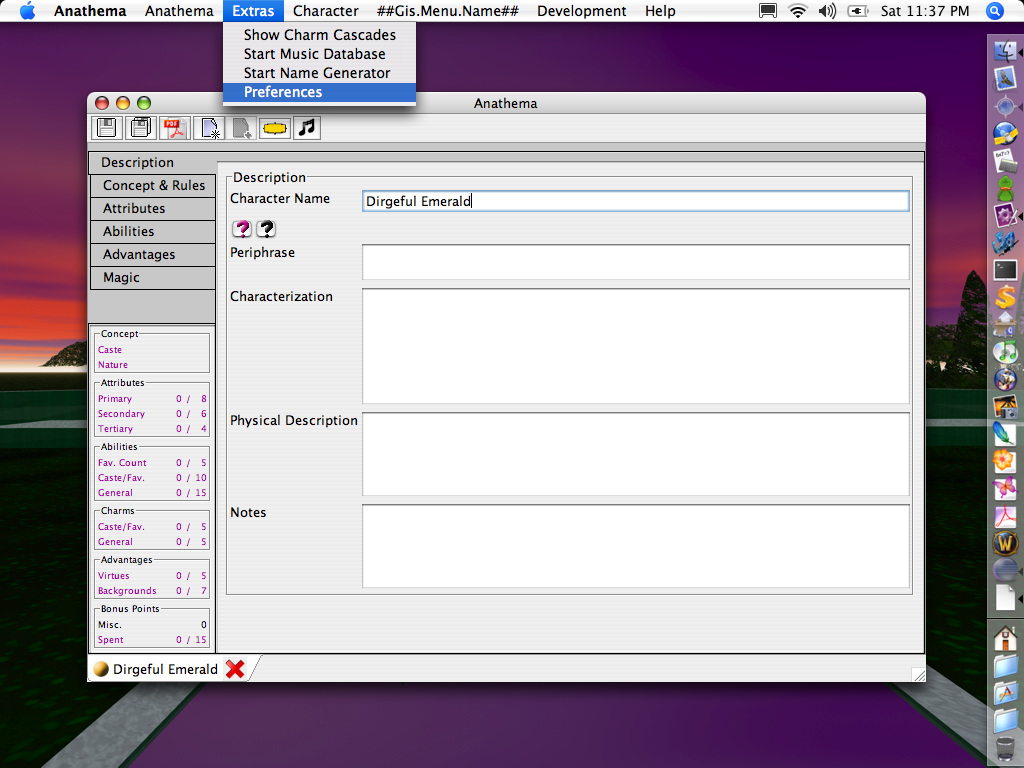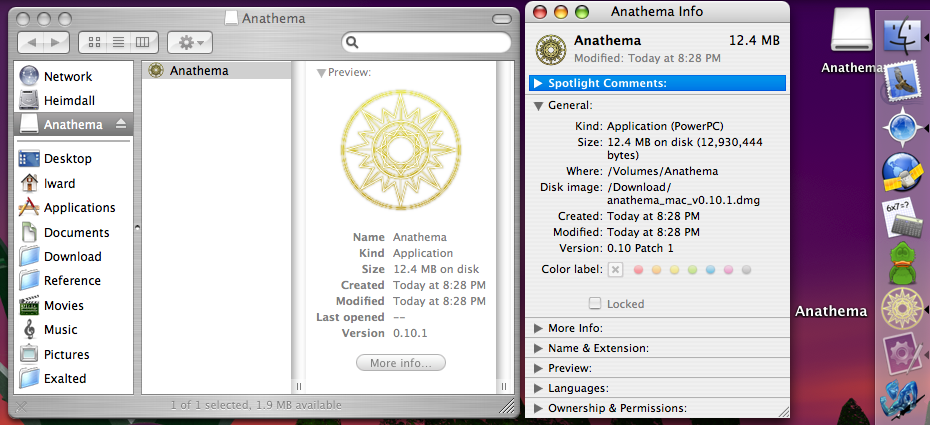wordman
Two Thousand Club
I'm in the process of building Anathema from source on the Mac. Inevitably, there will be weird little hurdles to jump. I thought I'd log them here.
Follow along with the video below to see how to install our site as a web app on your home screen.

Note: This feature currently requires accessing the site using the built-in Safari browser.
You're my hero,wordman said:I'm in the process of building Anathema from source on the Mac.
The eclipse guys did their part, too, at least if their benchmarks are to be believed.As a side note, I hadn't run Eclipse on my PowerBook for over a year. It is now significantly faster than it used to be, probably due to a much faster VM.
JDemo is a framework for Gui-Demonstrations, as an alternative to cleaning the path-entries you can get the framework at http://www.jdemo.de.Now down to 9 errors, 91 warnings. The errors stem from two projects relying on a JDEMO_HOME classpath variable that doesn't seem to be defined. This will probably turn out to be easy to correct, but I have to go to work. More later.
Precisly those were the ones I was referring over in the SI-thread.These two articles are probably going to come in handy. And this one.



I'm pretty sure you can programattically override -D options, but I'm not positive. System.setProperty("apple.laf.useScreenMenuBar", "true");, I think, though you probably need to set it early.UrsKR said:Do you know whether the properties controlling the screen menu bar can be set at runtime?
This is a Mac-ism that basically opens the print driver's preferences dialog. It tends to be the same for every application, because it's a driver-based thing. Chances are there is a two line way of doing this in Java.UrsKR said:what should the "Page Setup" item do?
The … is the HTML entity for the elipsis (...). I guess the forum code doesn't translate these.UrsKR said:The "…" item you keep mentioning is something akin to an ellipse ("...")
Using current development code or the released version? Dev. code can have compile errors at times.wordman said:but my five-minute effort with 0.10 last night had a problem of some kind.
Of course you do, I know who you are. As far as the 'net permits, that is.Once I get it working, I make a .dmg out of it. UrsKR, if I mail you a private link to it, could you host the download on SourceForge? (I go by 'wordman' on Source Forge as well, btw.)
The released version. Less hassle.UrsKR said:Using current development code or the released version? Dev. code can have compile errors at times.
Your understanding of .app is correct. A .dmg is a disk image. Essentially, you double click it and it "mounts" like a read-only hard drive. This makes them convenient for distribution. Other reasons that make them the preferred method of delivering Mac apps is that a) they have built-in compression, so no need to unzip, untar, etc. and b) they transfer clean over the internet. Some Mac files have multiple "forks" that really confuse other platforms, which tend to ignore and strip them. Usage of such files isn't nearly as bad as it used to be, but the .dmg format wraps all of this stuff up so you don't have to care either way. Linux people might think of a .dmg file as sort of .tgz file that hides some funky encodings and also contains a visual representation of how folders and files look when opened in a window (with background art). It sounds a little bizarre, but once you use it a couple of times, delivery mechanisms like .tar and .zip -- and especially installer applications -- become irritating.UrsKR said:Can you explain the difference between the .dmg and the .app?
I didn't mean to give that impression. It's possible to build the proper directory structure for an application bundle with Ant. As far as I know, however, there are two steps that can only be done on a mac.UrsKR said:You said that I couldn't build .dmgs in Ant.
